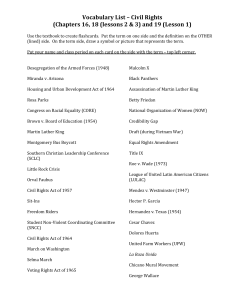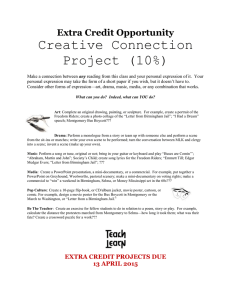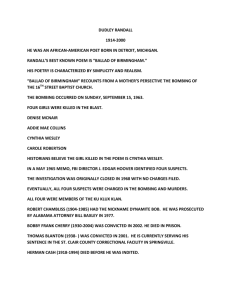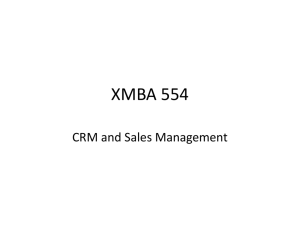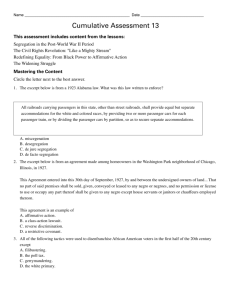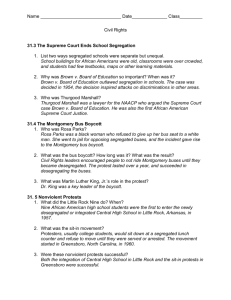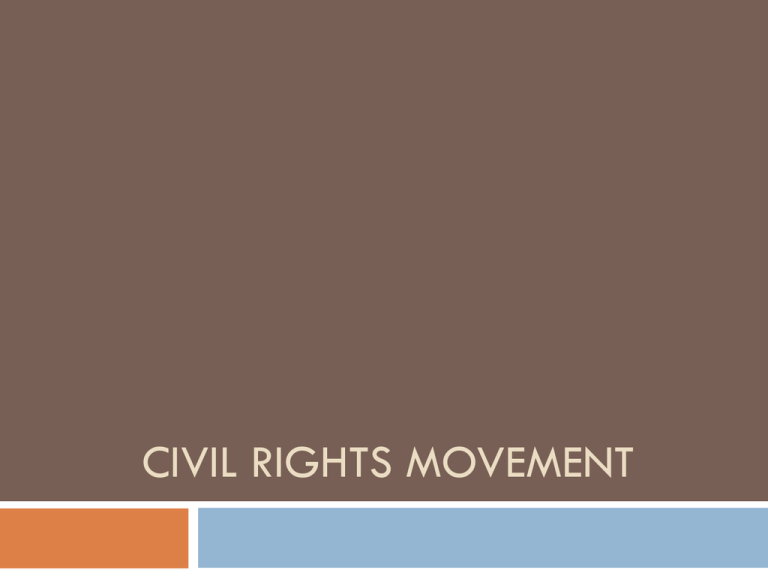
CIVIL RIGHTS MOVEMENT
3 Phases of the CRM
Legal Phase
Direct Action Phase
Black Power Phase
Civil Rights Movement: Legal Phase
Philosophy: if you change the law people’s attitudes will change
with it
Goal: make “separate, but equal” so expensive that gov’t would get rid of it
Key People: Charles Hamilton Houston and Thurgood Marshall
Key Court Cases: Gaines v. Missouri (1938), Sweat v. Painter
(1950), McLaurin v. Oklahoma (1950)
Helped Brown v. Board of Education (1954) overturn Plessy v. Ferguson (1896)
Problem with Brown v. Board: Supreme Court forced
desegregation of Southern Schools at “all deliberate speed”
No exact timeline allowed Southern Schools to drag their feet
Major Events of the CRM
1. Brown v. Board of Education, 1954
2. Montgomery Bus Boycott, 1955
MIA – Montgomery Improvement Association
Civil rights leaders who kept boycott alive while NAACP took Parks case to court
3. Little Rock Nine, 1957-58
Gov. Orval Faubus used Arkansas Nat’l Guard to prevent black students admission
Eisenhower sends 1,000 troops for protection
Closed school for the 1958-59 school year
4. Freedom Riders, 1961
CORE members (racially mixed group) rode a bus from D.C.
through the south to New Orleans
5. Freedom Summer, 1964
White college students from the North taught literacy and
constitutional rights – help register voters
Major Events of the CRM
6. Children’s Crusade: Birmingham, 1963
7. March on Washington
250,000 protested at Washington Mall to show support for
Kennedy’s civil rights bill
“I have a dream”
8.16th Street Bombing
Project C
Birmingham – 4 girls killed in church bombing
9. Civil Rights Act of 1964
Passed by Johnson and ending the legal discrimination on the
basis of race, color, religion, nat’l origin and sex in voting,
employment and public accommodations


